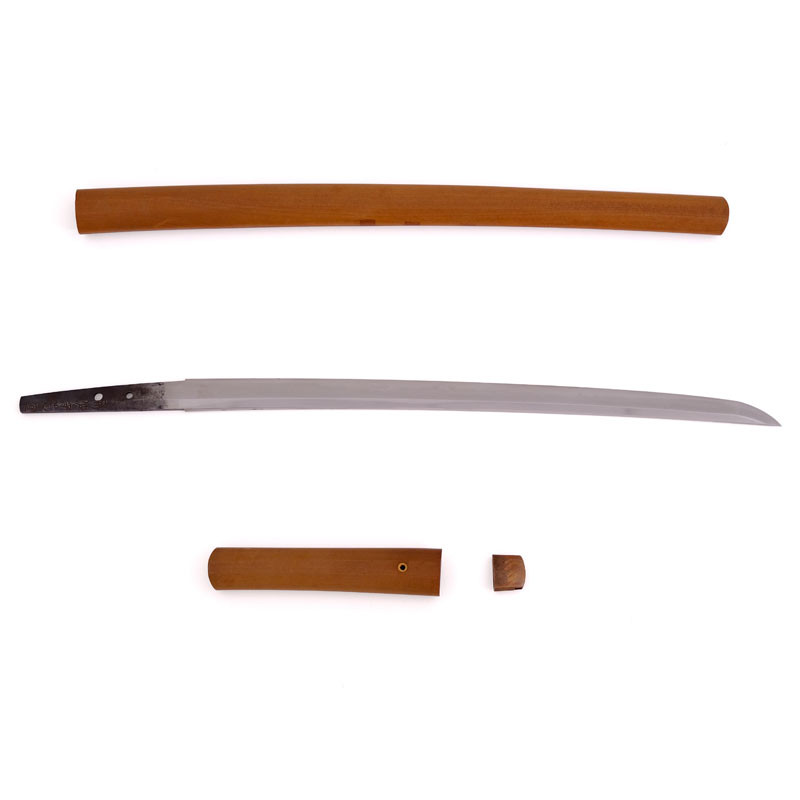












































More informations about this product
| Total Weight | 0.947 kg | |
| Weight without Saya | 0.730 kg | |
| Blade Weight | 0.604 kg | |
| Full Blade length (Toshin) | 71.75 cm | |
| Nagasa | 56.50 cm | |
| Nakago Length | 15.40 cm | |
| Sori (curvature) | 0.80 cm | |
| Kissaki Length | 4.20 cm | |
| Moto Haba | 3.19 cm | |
| Saki Haba | 2.15 cm | |
| Moto Kasane | >A = 0.69 cm B = 0.72 cm |
|
| Saki Kasane | A = 0.42 cm B = 0.49 cm |
|
| Curvature | Tori Zori | |
| Type Kissaki | Chū Kissaki elongated | |
| Blade Structure | Shinogi Zukuri (diamond shaped) | |
| Mune | Iori Mune (triangular) | |
| Hamon | Yakidashi then, Sudare ba, Yahazu and Gunome in Nioi deki, with Yo and Sunagashi | |
| Hada | Itame Hada and Masame Hada | |
| Boshi | Mishina Boshi | |
| Nakago | 15.4 cm, Ubu, Signed 丹波守吉道 on Omote face, 2 Mekugi Ana, Yasurime obliques Sujikai on Omote, Kiri Yasurime on Ura, Futsu Gata shape, rounded end Yamashiro Jiri. | |
| Saya | Weight: 217g, length of 62.0 cm, Shirasaya in Magnolia. | |
| Tsuka & Tosogu (Tsuba, Menuki, Fuchi Kashira) |
- Tsuka: weight of 85g for a length of 21.5 cm, in Shirasaya in Magnolia, passage of the Mekugi with reinforcement in horn. - Habaki: weight of 41g in copper, Nekogaki obliques Yujo. |
|
| Study & Team Review |
The blacksmith lineage Yoshimichi 吉道 originates from the Mishina 三品 school of Mino, founded by Kaneuji 兼氏 at the 14th century. This school was strongly influenced by the tradition of Soshu because Kaneuji was one of the ten students of Masamune. The Yoshimichi lineages of the Shinto era are very reputed and known for the invention of the Hamon Sudareba 簾刃 taking up the pattern of bamboo curtains, made from Sunagashi. |
|
Share your opinion
error Your review appreciation cannot be sent
feedback Report comment
check_circle Report sent
error Your report cannot be sent